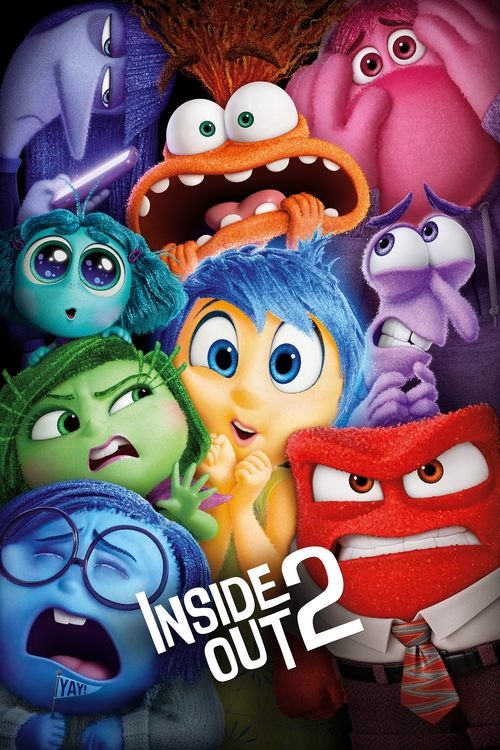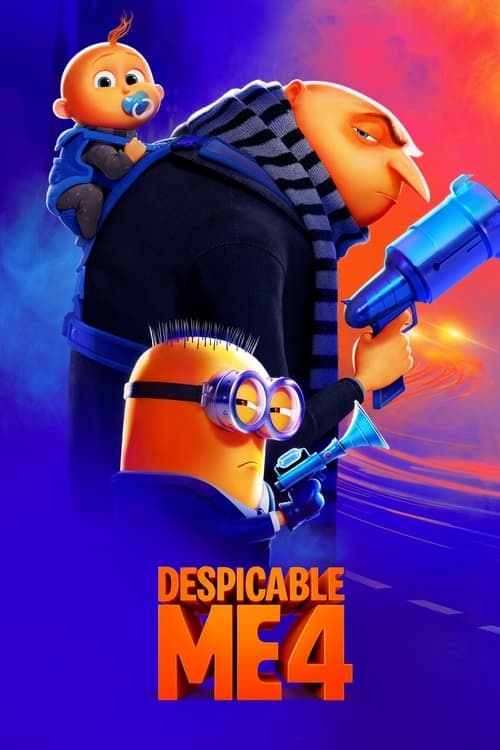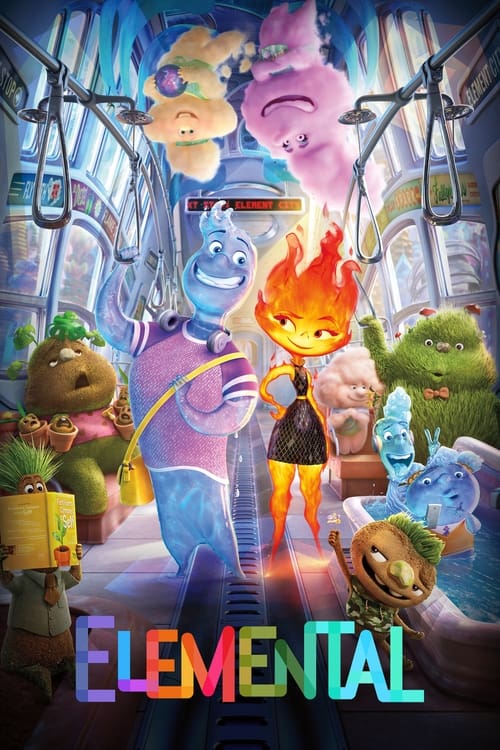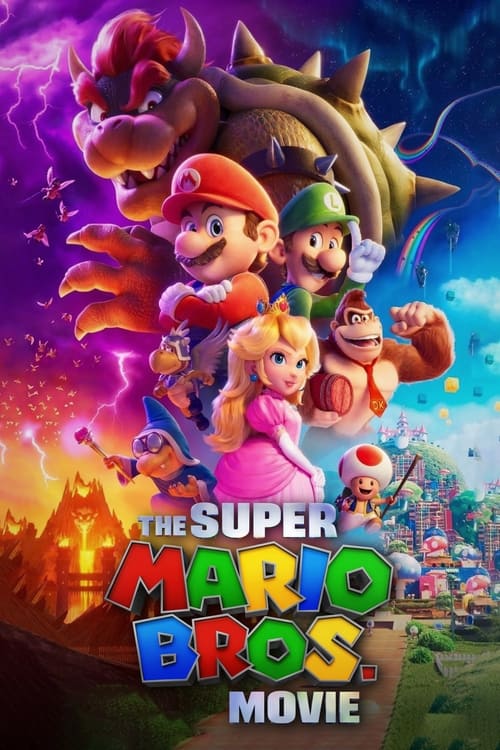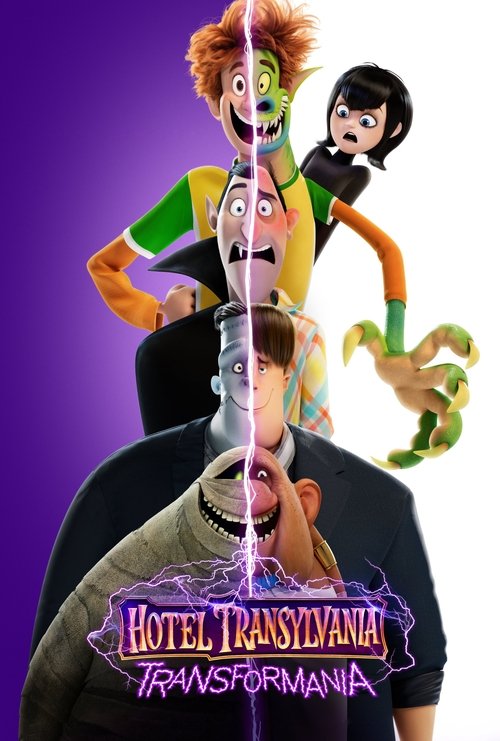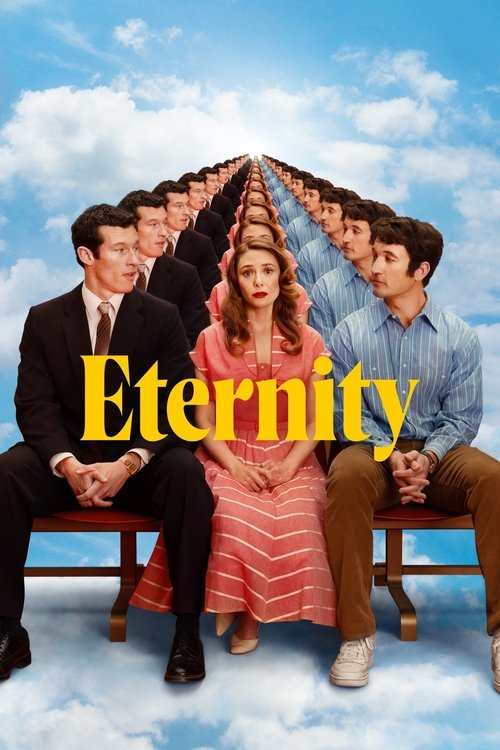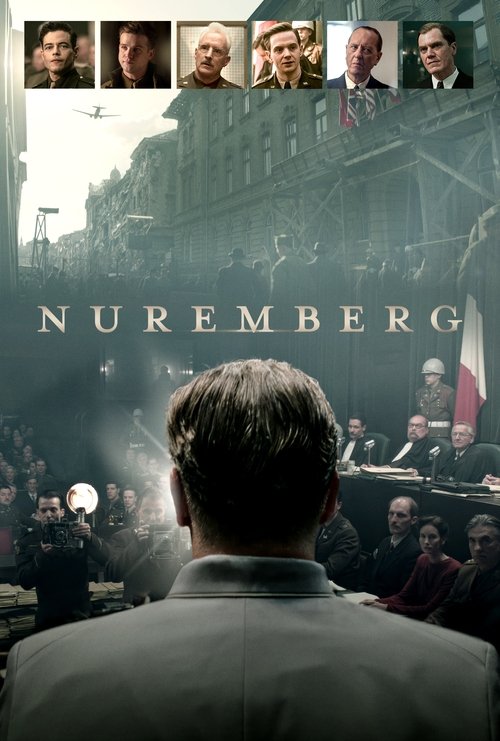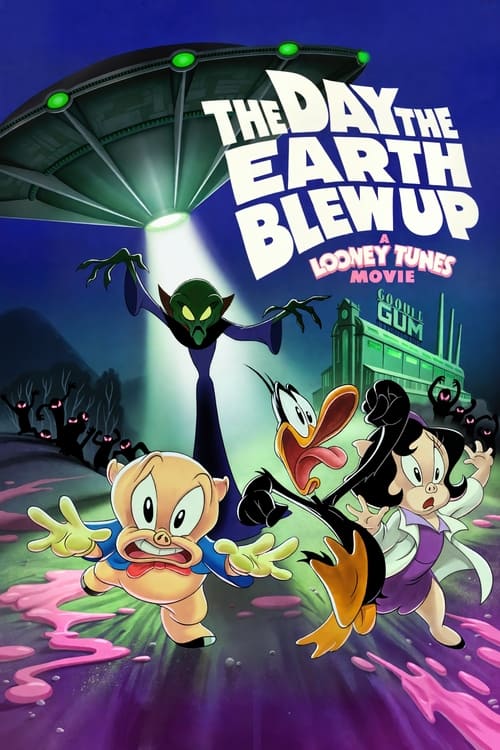
Ask Your Own Question
What is the plot?
Riley Andersen is thirteen and preparing for a hockey game when the film opens. Her parents stand at the rink's glass and shout encouragement as she skates; inside her skull, Joy, Sadness, Anger, Disgust, and Fear operate the command center and steer her reactions during play. During a scramble on the ice Riley tangles with an opponent and receives a penalty, sitting out in the box while her teammates continue the match. While she waits, Joy narrates developments since the last time she and the others were in full control: Riley has explored new activities and formed two close friendships with teammates Grace and Bree, and the emotions have organized a newly constructed region of the mind labeled the Sense of Self, a repository where core memories and identity elements are kept. To keep Riley's self-image favorable, Joy has engineered a mechanism that ejects unpleasant memories down a recall tube toward the back of the mind.
After Riley returns to the ice she redirects her focus, finds an opening, and scores the winning goal. On the bench her parents cheer and her teammates gather. Coach Roberts, watching from the side, approaches Riley, Grace, and Bree to hand them flyers for a three-day hockey camp run by the local high school's team, the Fire Hawks, and tells them the camp will showcase players who might earn spots on the school roster. That evening at home Riley's parents express pride and excitement, but Riley obsesses on the penalty she took; she worries she cost her team the game. Joy responds by using a recall tube and sending the unpleasant memory away into the mind's storage, sealing it behind other discarded recollections.
Later that night the control center alarms. A puberty warning goes off on the console and, within minutes, a crew of Mind Workers storms in, wielding tools and scaffolding. They begin to reconfigure Headquarters, ripping out and replacing parts of the control board while leaving offices and corridors in disarray. The overhaul results in a different input behavior: when Anger, Sadness, or Disgust touch the console, Riley now overreacts in the real world to minor prompts from her parents. As the workers finish installing a new layout, the door to Headquarters opens and a line of unfamiliar emotions enters the control room.
Anxiety arrives first and immediately alters Riley's behavior by making her deliver an awkward introduction to Valentina "Val" Ortiz, the Fire Hawks' captain whom Riley admires. Envy follows, moving to touch the bright red streak in Val's hair until Disgust pulls her back. Embarrassment appears and sinks into shame whenever attention shifts; she speaks little. Ennui lounges on the control couch and manipulates parts of the console through a smartphone app, operating the dials in a bored and dismissive way. A brief visitation by Nostalgia is announced but Anxiety dismisses her as unnecessary for now. The original five emotions react to the newcomers and bicker about how Riley should act at camp: Joy insists Riley should enjoy herself and stay loyal to Grace and Bree, while Anxiety argues Riley must become the kind of person who will impress older players and secure a spot on the Fire Hawks.
The next morning Riley's parents drive her, Grace, and Bree to hockey camp. On the way, Joy listens as Riley internalizes a coach's comment she hears about future school placements and learns through Riley's reactions that Grace and Bree will attend a different high school in the fall. Riley becomes teary; Sadness allows a small cry, but Joy quickly steadies Riley. At camp Riley spies Val and is momentarily paralyzed with excitement. The Fire Hawks' locker room becomes the setting for social triangulation: Val invites Riley to hang with the older girls, and Anxiety, Envy, Embarrassment, and Ennui push Riley toward shaping her behavior around impressing Val rather than staying close to her longtime friends.
Tensions spike during a team warm-up when Riley dresses down with Grace and Bree; Coach Roberts notices the horseplay and confiscates the girls' phones as punishment, then subjects the group to drill repetitions. Later, several of Val's teammates make disparaging remarks about Riley's attitude and potential to fit in. Embarrassment and Sadness combine to make Riley cry, and Anxiety steps forward to shepherd her to Val to apologize and patch things up. Val accepts Riley's apology and continues to invite her to the Fire Hawks' circle, which encourages Anxiety to push harder.
When Coach Roberts divides the campers into selection groups, Riley must choose whether to remain with Grace and Bree or join Val and the Fire Hawks. Joy believes Riley's preexisting Sense of Self--organized in a tidy vault of identity elements that portrays her as a loyal friend--will lead her to pick her longtime companions. Anxiety, convinced Riley needs to evolve to secure future success, grabs the physical representation of the Sense of Self from the Belief System and shoves it into the recall tube, sending it spinning toward the back of Riley's mind. When Joy protests, Embarrassment straps a glass jar around the five original emotions and has Mind Workers bottle them up; the jar is tossed down a chute into the Memory Vault where many of Riley's imaginary friends and discarded fantasies are stored.
The new emotions immediately set to work constructing an alternative sense of who Riley should be. Anxiety drags together recent memories--practice runs, coach's praise, moments of insecurity--and assembles them into a new, anxious Sense of Self that prizes performance and social acceptance over long-standing loyalty. This modified identity nudges Riley to join Val's clique, to dye a red streak in her hair like Val's, and to tighten her focus on the upcoming scrimmage that will influence Coach Roberts' roster decisions. Riley drifts away from Grace and Bree and starts to rehearse behaviors that please Val's group.
Inside the Memory Vault the original five emotions find themselves boxed in among Riley's long-lost playthings and fantasy characters. They meet Bloofy, a brightly colored cartoon creature with a magic pouch; Pouchy, a cheeky imaginary friend who produces improbable items; and Lance Slashblade, a heroic video game avatar whom Disgust has secretly admired. Deep Dark Secret, an ominous, bearded guardian of shame and hidden truths, notices the racket and agrees to help the jarred emotions in exchange for nothing. Together they prise the vault door open; Pouchy produces sticks of dynamite which the group uses to blast the door and startle the security staff. In the confusion Lance executes a dramatic move--rolling forward like a bowling ball--that knocks guards into a security cell and allows the emotions to flee down dimly lit corridors.
Once free, the five set a single objective: retrieve the Sense of Self. Joy prioritizes finding and recovering it above all else, certain that returning Riley's original identity will correct the path she is taking. The group races across vast mental landscapes. They traverse the Hall of Memories, where rows of urns and floating orbs hang like lanterns; they stumble into Imagination Land, a kaleidoscopic environment where Mind Workers manufacture theatrical ideas and hypothetical scenarios; and they pass through rooms filled with Riley's islands of interest. At one point the four non-joy emotions suffer a morale collapse: Anger and Disgust spar about strategy, Fear points out how dangerous their plan is, and Joy lashes out in frustration. Anger talks her back from the brink, and the team regains its energy.
Meanwhile, back in Headquarters the new emotion cohort exploits its control. Ennui's app-driven manipulation of the console spawns structural changes in Riley's interior landscape. During one transit the friends' mental floatation craft encounters a "Sar-Chasm," a conversational crevasse caused by Ennui's sardonic influence in which spoken words echo back as sarcastic barbs; the chasm's acoustics thwart calls for help and hamper assistance from the stationed Mind Workers, who now view the trapped emotions as troublemakers. Anxiety grows more insistent, pressing Riley to sneak into Coach Roberts' office and read her notebook, where scribbled evaluations will determine whether Riley is "ready" for the Fire Hawks.
Joy and her companions travel by parade float across a current of stored ideas and attempt to use a recall tube to ascend back to the Belief System. As their party approaches the rear of Riley's mind they realize Joy's earlier recall mechanism has deposited a mountain of bad memories, stacked like a cliff, with the Sense of Self perched on top. Joy has in the past launched Riley's unpleasant recollections to that cliff for safekeeping; now the cliff is the only visible route to the old identity. The four attempt to use a tube to climb the cliff, but Anxiety senses their scheme via a two-way radio Sadness carries--and she smashes the tube. With the recall tube destroyed Joy, Anger, Disgust, and Fear become stranded behind a wall of discarded memories and cannot return the old Sense of Self to Riley.
At the same time Sadness slips back toward Headquarters on her own mission to undo Anxiety's manipulations. Embarrassment, who watches Sadness's stealthy return and has complicated loyalties, discovers her. Rather than expose Sadness, Embarrassment chooses to conceal her presence and assist by stealing Ennui's phone, which runs the app that controls the new emotions' console. Sadness uses the device in an attempt to sabotage Anxiety's control, but Anxiety snatches the phone back and forces Riley to open Coach Roberts' journal. Riley reads the entry under her name and finds the notation "not ready yet." The phrase cuts her; Anxiety collects that wounded memory and forges it into more ammunition for the anxious Sense of Self.
With the recall tube gone and the old route to Headquarters blocked, Joy resorts to an alternative plan: create a flood of bad memories that will sweep away the cliff's support and send the piled memories down in a torrent toward the belief pool. They secure dynamite from Pouchy in the Memory Vault and rig a controlled explosion under the mountain of stored unpleasant recollections. The cliff collapses, and the mass of memories cascades like an avalanche, forming a roiling river. Joy, Anger, Disgust, and Fear launch the parade float and ride the memory flood. As the torrent rushes forward it slams them into the outskirts of Headquarters and carries the float--and the four emotions--back to the console.
Back at the real-world scrimmage the Fire Hawks play against the team that includes Grace and Bree. Riley arrives determined to secure her place and to beat Val's freshman scoring record; she presses hard and tries to score three goals in one game. Her aggressiveness alienates her teammates, and when she attempts to force a third goal she collides with Grace, sending Grace tumbling and injuring her. Coach Roberts rules a penalty and sends Riley to the box. On the bench Riley's guilt and panic coalesce into a full-blown anxiety attack. Inside Headquarters Anxiety has become a whirling mass at the console, her fingers darting across controls and her thoughts multiplying into spirals. Her frantic presence amplifies Riley's fear and shame until she hyperventilates and collapses into uncontrollable tears.
Joy, Anger, Disgust, and Fear arrive back at the console amid the panic. Anxiety, surrounded by the storm she built, becomes immobilized by guilt and distress; she swarms the control console but cannot steady Riley. Joy approaches and reaches for her, speaking calmly through the commotion and persuading Anxiety to withdraw her hands from the controls. Anxiety flails and then begins to apologize; she admits aloud that her attempt to remake Riley into someone who can compete with older players has backfired and produced a self-loathing version of Riley. She concedes she overstepped and cannot be the sole architect of Riley's identity.
Joy acts quickly. She removes the anxious, corrupted Sense of Self that had been formed from Riley's pressured memories and places the original Sense of Self back at the Belief System's center. The restoration, however, does not fully soothe Riley; the anxiety attack persists, and she remains shaken. Joy then makes a deliberate choice: she deletes the first, rigid Sense of Self that contained only select "good" memories, letting the Mind's processes reconstitute an identity from the totality of Riley's memories--positive, negative, embarrassing, proud, loyal, and flawed. As the new, integrated Sense of Self assembles, Joy, Sadness, Anger, Disgust, Fear, Anxiety, Envy, Embarrassment, and Ennui all step away from their isolated roles and converge on the new console. They place their hands on the controls together and stabilize Riley's interior state.
The combined emotional coalition calms Riley. She regains breath and steadies her heartbeat. Grace and Bree approach the bench and look at her with concern rather than condemnation; Riley apologizes directly for crashing into Grace and for drifting away. Grace accepts the apology and Bree reassures her; they reaffirm their friendship. On the ice Riley finishes the scrimmage, playing with renewed balance and cooperative intent rather than trying to prove herself alone. In Headquarters the various emotions monitor Riley cooperatively: they debate and adjust inputs but now accept shared responsibility for her feelings and decisions.
Months pass. Fall arrives and the first day of high school begins. Riley stands in the Fire Hawks' locker room with Val and other new teammates, but this time Bree and Grace are with her in the gymnasium corridors; they chat and plan for classes even though they attend different high schools. At school the coach posts the team roster; players gather, eyes scanning for their names. Riley checks her phone for the official notification. The phone buzzes with a message; she looks up, sees the posted list, and breaks into a wide grin--her expression says she has made the team.
Throughout the film no character dies; no on-screen killings occur. Every major confrontation resolves without lethal violence.
In the final moments in Riley's mind the emotions now operate as a larger panel of nine rather than five; Joy resumes her role as chief operator at the console but shares authority with Anxiety and the others. They coordinate Riley's choices and responses in a more complicated and integrated manner. During the end credits Joy slips away to the Memory Vault to speak with Deep Dark Secret. She asks him to reveal Riley's great secret. Deep Dark Secret mutters that Riley's secret is having set the family rug on fire years earlier; Joy responds that she had suspected the secret was Riley peeing in the pool. Deep Dark Secret grumbles and retreats back into the Vault as the film cuts to black.
What is the ending?
Brief Ending Summary:
In Inside Out 2, Riley, now at a hockey camp, faces challenges as new emotions like Anxiety, Envy, Embarrassment, and Ennui guide her decisions. Joy, determined to help Riley, clashes with Anxiety but ultimately rescues her from a breakdown. The two emotions come to understand that they must work together for Riley's well-being. In the end, Riley reconciles with her friends and finds joy again in hockey, learning that embracing change is part of growth.
Expanded Narrative:
The ending of Inside Out 2 unfolds with Riley at a hockey camp, where she's trying to impress the team's star player and coach. However, her actions are largely influenced by the new emotions inside her, particularly Anxiety, Envy, Embarrassment, and Ennui. These emotions lead her to make decisions that alienate her friends, Bree and Grace, and create tension within herself.
As the story progresses, Joy becomes determined to help Riley. She realizes that the new emotions, while necessary, are causing as much chaos as they are trying to solve. Joy sees Anxiety as the key to resolving Riley's internal conflict and attempts to wrestle control away from her. Meanwhile, in the real world, Riley is facing the consequences of her actions, ending up in the penalty box during a hockey match.
A pivotal moment occurs when Joy and Anxiety have a heart-to-heart conversation. Joy rescues Anxiety from her breakdown, and the two emotions come to understand that they need to work together. They realize that for Riley to find peace and happiness, all her emotions--old and new--must coexist and support each other.
In the climactic final scenes, Riley resolves her issues with Bree and Grace, and she also befriends a new character, Val. The emotions inside Riley, having learned to coexist, find peace among themselves. Joy takes control at Anxiety's behest, and Riley rediscovers joy in hockey. The movie ends with Riley skating for fun, no longer burdened by the need to win or impress others. The sun shines down on her, symbolizing a brighter future where she can enjoy life without the weight of anxiety. This conclusion emphasizes Riley's growth and acceptance of change as she navigates the complexities of adolescence.
Is there a post-credit scene?
As of my last update in October 2023, specific details about the post-credit scene for "Inside Out 2," produced in 2024, have not been officially released. Therefore, I cannot provide a description of any post-credit scene. For the most accurate and up-to-date information, I recommend checking official sources or reviews after the movie's release.
What new emotions are introduced in Inside Out 2?
Inside Out 2 introduces two new emotions: Anxiety and Pride. Anxiety is depicted as a small, jittery character who often frets about potential dangers and outcomes, while Pride is a larger, more confident character who encourages Riley to embrace her achievements and self-worth.
How does Riley's transition to high school affect her emotions?
Riley's transition to high school brings a whirlwind of new experiences and challenges, leading to heightened feelings of anxiety and uncertainty. Her emotions struggle to adapt to the social pressures and academic expectations, causing conflicts among them as they navigate her new environment.
What role does Joy play in Riley's emotional development in the sequel?
In Inside Out 2, Joy takes on a more supportive role, guiding Riley through her complex feelings as she faces the challenges of adolescence. Joy learns to appreciate the importance of other emotions, especially Anxiety, in helping Riley cope with her fears and insecurities.
How do the new emotions interact with the existing ones from the first film?
The new emotions, Anxiety and Pride, create a dynamic interplay with the original emotions--Joy, Sadness, Anger, and Disgust. Their interactions lead to moments of conflict and collaboration, showcasing how Riley's emotional landscape becomes more nuanced as she learns to balance her feelings.
What significant event triggers a major emotional crisis for Riley in the film?
A significant event that triggers an emotional crisis for Riley is when she faces a major setback in her first high school performance, leading to overwhelming feelings of self-doubt and anxiety. This moment forces all her emotions to confront their roles and work together to help her regain confidence.
Is this family friendly?
Inside Out 2 (2024) is generally considered family-friendly, with a PG rating for some thematic elements. However, there are a few scenes and themes that might be potentially objectionable or upsetting for young children or sensitive individuals:
- Thematic Elements and Intensity: The movie includes some intense moments, such as idea storms resembling tornadoes, characters in peril, and emotional stress, which might be overwhelming for very young viewers.
- Violence and Action: There are scenes involving mild violence, like characters being hit or objects being smashed, but these are not graphic or gory.
- Sexual References: The film touches lightly on puberty and bodily changes, which might prompt some conversations for families.
- Emotional Stress: The movie deals with complex emotions like anxiety and anger, which could be distressing for sensitive viewers.
Overall, while it is suitable for most children, parental discretion is advised, especially for very young or sensitive children.

